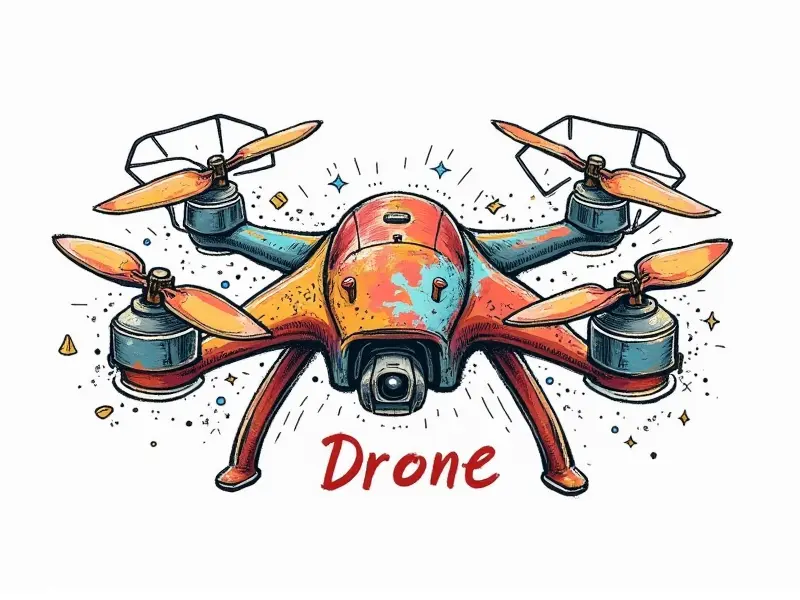Can they fly in rain?

Can RC Drones Fly in Light Rain?
Flying radio-controlled (RC) drones in light rain is a topic of much debate among hobbyists and enthusiasts. While some models are designed to handle minor precipitation, others may suffer from performance issues or even damage if exposed to moisture. Understanding the capabilities of your specific RC drone model is crucial before venturing out on a rainy day.
Flying RC Helicopters in Light Rain
RC helicopters pose unique challenges when flying in light rain due to their complex mechanical components and aerodynamic design. The rotor blades can become waterlogged, affecting lift and stability. Additionally, moisture can seep into the electronics, causing malfunctions or permanent damage.
Tips for Flying RC Helis in Light Rain
- Check Weather Conditions: Always monitor weather forecasts before attempting to fly your RC helicopter in light rain.
- Use Waterproof Coatings: Apply waterproofing agents or sealants to critical components such as rotor blades and electronic circuits.
- Keep Flight Time Short: Limit flight duration to minimize exposure to moisture, reducing the risk of water damage.
Quadcopters and Rain: Safe to Fly?
Quadcopters are generally more robust than RC helicopters due to their simpler mechanical design. However, flying them in light rain still requires caution. Moisture can interfere with propellers and electronic sensors, potentially leading to erratic flight behavior or system failures.
Can You Fly RC Quadcopters in Light Rain?
The answer largely depends on the specific model of your quadcopter. Some high-end models come equipped with waterproof features, making them more resilient against light rain. However, cheaper and less advanced models may not fare well under similar conditions.
FPV Racing Drones vs. Rainy Weather
Flying FPV racing drones in rainy weather is particularly risky due to the high speeds involved. Water can quickly accumulate on propellers and bodies of the drone, affecting aerodynamics and control. Moreover, moisture ingress into electronic components can lead to catastrophic failures during critical moments.
Weatherproofing Your FPV Drone for Rainy Days
- Select Weather-Resistant Models: Opt for FPV drones that are specifically designed with waterproof features or have undergone rigorous testing in wet conditions.
- Apply Protective Coatings: Use specialized sealants to protect critical components from moisture damage.
- Limited Flight Time: Reduce flight duration and avoid prolonged exposure to rain to prevent water accumulation inside the drone.
RC Airplanes in Light Showers
Flying RC airplanes in light showers can be especially challenging due to their larger surface area, which tends to collect more moisture. This added weight can significantly impact flight performance and stability, making it harder to control the aircraft effectively.
Is It Safe to Fly RCs in Drizzle?
The safety of flying RC airplanes in drizzle depends on several factors including the model’s design, material quality, and your proficiency as a pilot. While some models can handle light rain with minimal issues, others may suffer from performance degradation or structural damage.
How Do RC Helicopters Handle Rain?
The handling of RC helicopters in rain is influenced by multiple factors such as rotor blade material, electronic waterproofing, and overall design integrity. Proper maintenance and preparation are essential to mitigate risks associated with flying these aircraft in wet conditions.
Tips for Flying RC Helis in Light Rain
- Pre-flight Inspection: Thoroughly inspect your helicopter before each flight, ensuring all components are dry and functioning properly.
- Protective Gear: Use waterproof covers or wraps to shield sensitive areas from moisture during transit and storage.
Effects of Rain on RC Plane Performance
The performance impact of rain on RC planes varies depending on the model's construction materials, electronic protection, and aerodynamic design. Moisture can affect lift, stability, and control surfaces, leading to unpredictable flight behavior and increased risk of accidents.
Conclusion
Flying RC drones in light rain is possible but requires careful consideration and preparation. Each type of drone—helicopters, quadcopters, FPV racing drones, and airplanes—has unique challenges when exposed to moisture. By understanding the capabilities and limitations of your specific model, taking necessary precautions, and adhering to safety guidelines, you can minimize risks and enjoy flying in light rain conditions.

